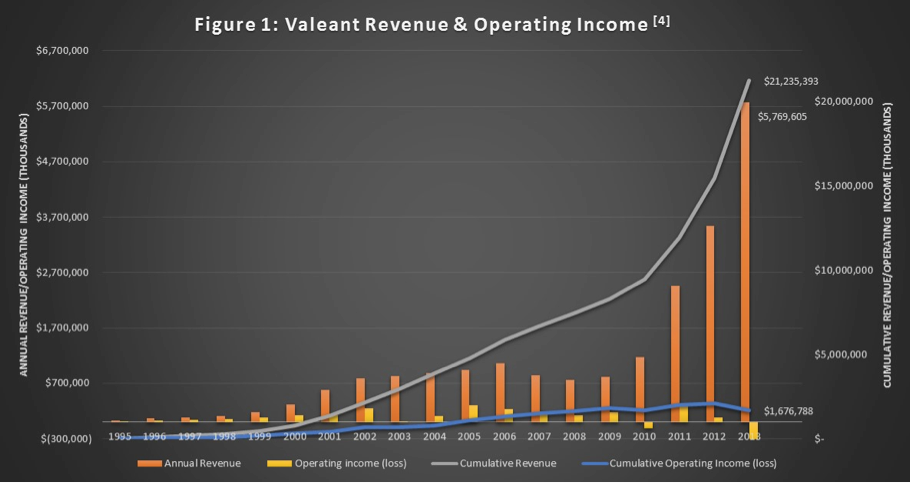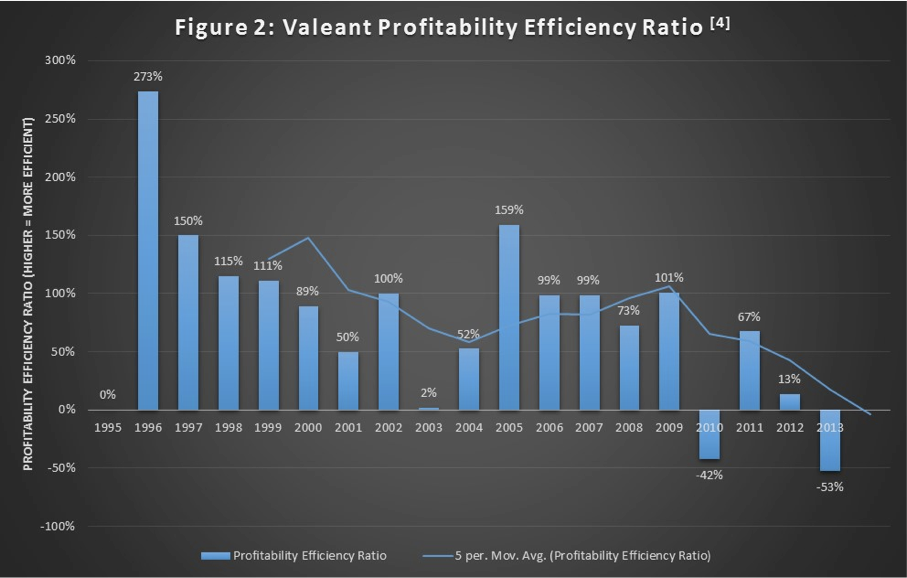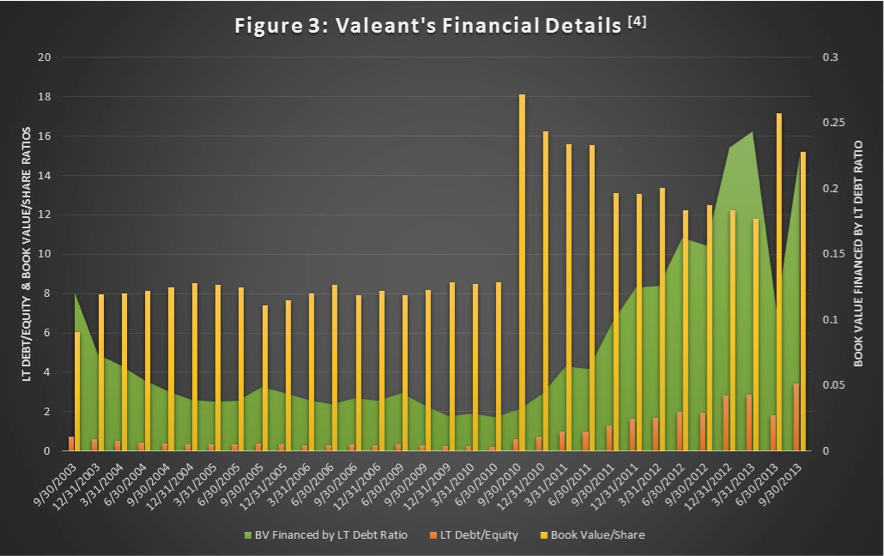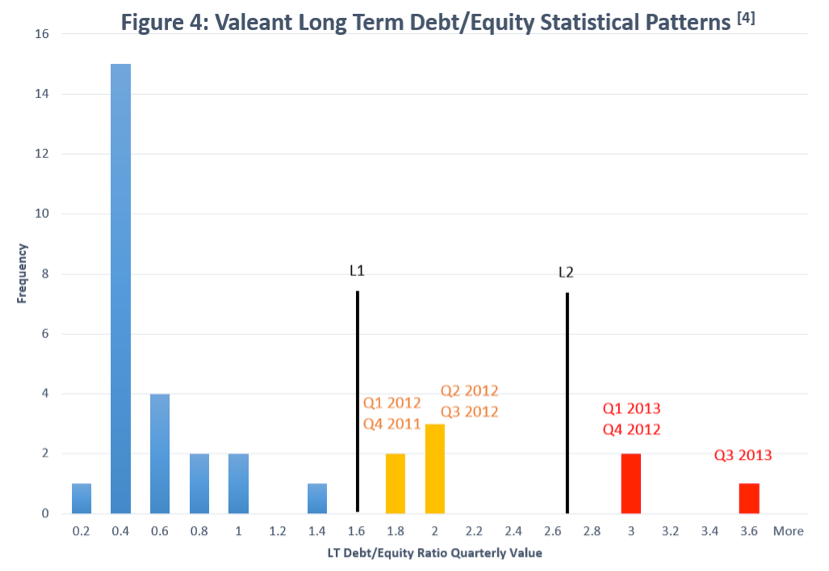M&A VS R&D: Is Valeant's Strategy Financially Viable?
Douglas Tsao, Vice President at Barclays, spoke on the outcomes of Merges & Acquisitions, and its impact on company stock prices.
While at the 2014 Partnerships in Clinical Trials Conference, Douglas Tsao, Vice President at Barclays, spoke on the outcomes of Merges & Acquisitions (M&A), and its impact on company stock prices. Tsao demonstrated that Valeant Pharmaceuticals ($VRX), which relies solely on M&A, exhibited the largest 5 and 10 year stock price gains (1156%, and 762%, respectively) compared to biopharmaceutical enterprises that invested in R&D (Merck: 109%, 29%, and Eli Lilly, 74%, -9%, respectively). This article will describe the effects that M&A has had on Valeant’s financial outcomes.
Valeant’s Business Model
Valeant has relied heavily on M&A in its business model, which resulted in a very diverse global product portfolio ranging from dermatology, medical devices, cosmetics, gynecology, neurology, oncology neurology, rheumatology and much more [1]. In December 2013, Valeant acquired Solta Medical Systems for $250 million [2], and PreCisison Dermatology for $475 million in February 2014 [3]. Due to acquisitions, Valeant’s revenue has grown from $2.5, $3.5 and $5.8 Billion from 2011 – 2013, respectively [4], and is on its way to becoming the world’s largest pharmaceutical company by market capitalization.
Albeit Valeant is M&A heavy, they are investing a small portion of their operating costs in R&D; Valeant currently has 4 active clinical trials in dermatology, diabetes and lymphoma, has recently completed a 496 patient Acne study [5], and in March 2014, received FDA approval for Metronidazole 1.3% (an antibiotic gel) in collaboration with Actavis [6].
Is Valeant’s M&A Business Model Financially Viable?
Naturally, Wall Street has applauded Valeant for its aggressive M&A strategies because of its revenue growth (Figure 1). However, Figure 1 demonstrates that Valeant’s operating income (also known as Earnings before Interest and Tax) is quite low compared to its revenue growth, and has not grown in tandem with revenue figures. In fact, Valeant has been less profitable annually from 2007 – 2013 compared to 2005 despite colossal revenue growth. Figure 2 confirms that Valeant’s profitability growth rate has become less efficient compared to its revenue growth rate.
Why such low figures? Valeant’s business operational expenses have remained virtually unchanged (at 50% of total costs), nonetheless, the rest of Valeant’s expenses appear to be going towards paying down interest and restructuring costs. In other words, Valeant is unable to generate sufficient revenue from its M&As in order to generate a significant ROI, given business operational and interest expenses. Biopharmaceutical enterprises that have invested in R&D have yielded much higher ROI figures (>20%); from 2010-2013, Valeant’s profitability has been less than 15% and has fluctuated in a volatile fashion.


What’s going on Behind the Scenes, Financially?
Valeant has been very aggressive in its M&A activities, and considering it has low profitability compared to revenues, who (asides from shareholders) is funding these acquisitions? Figure 3 delineates Valeant’s long-term debt to equity ratio, book value per share, and book value financed by long term debt on a quarterly basis.

Figure 3 suggests that Valeant has been increasingly using debt to finance M&A, and more of its assets (at liquidation value) will be owned by debtors. How aggressive is Valeant in its debt financing? Figure 4 indicates that Valeant has statistically taken extreme measures in recent quarters by increasing its debt/equity ratio to critical levels compared to its historical performance. In other words, Valeant is using more debt to finance operations and M&A activities at a very risky rate compared to the amount of equity that it has.

What Does this Mean for Shareholders?
If Valeant’s M&A investments do not generate a notable profit, the company may go into bankruptcy (which will significantly devalue its stock price). Should the company go bankrupt (rare, though possible), most of the debt from its acquired assets will go to senior creditors, leaving shareholders with minimal value. So, why is Valeant’s stock price so high? One possibility involves the notion that investors are focusing on Valeant’s revenue, and not on its intrinsic value. Is the M&A model working for Valeant? While this model has bode well for Valeant’s surging stock price and revenue compared to biopharmaceutical peers that have invested in R&D, Valeant’s security is highly volatile, and is much riskier than its peers.
How Can M&A Enhance Biopharmaceutical Diversification?
While this analysis identified some of the financial risks associated with M&A, one of the biggest advantages that Valeant has gained through its M&A strategy includes high portfolio diversification, which minimizes competitor impact on revenue. On the other hand, many biopharmaceutical enterprises that have invested solely in R&D have not experienced revenue growth rates as high as those that have invested in M&A. A healthy balance between R&D and M&A offers both medical product portfolio diversification and revenue expansion, which may bode well for a biopharmaceutical enterprise’s security price and competitive positioning. It is important to emphasize that if a company is to engage in M&A, they must consider portfolio diversification impact, revenue potential and all other associated expenses with such investments.
Moe Alsumidaie is a clinical trials and healthcare business strategist, who specializes in advanced data analysis. Moe can be reached Here. Do you have the expertise to join the Exclusive Breakthrough Solutions in Clinical Trials & Healthcare Group? Apply Here.
References:
[1] http://www.valeant.eu/en/products
[5] http://clinicaltrials.gov/ct2/results?recr=Open&lead=Valeant
[6] http://www.prnewswire.com/news-releases/252321171.html